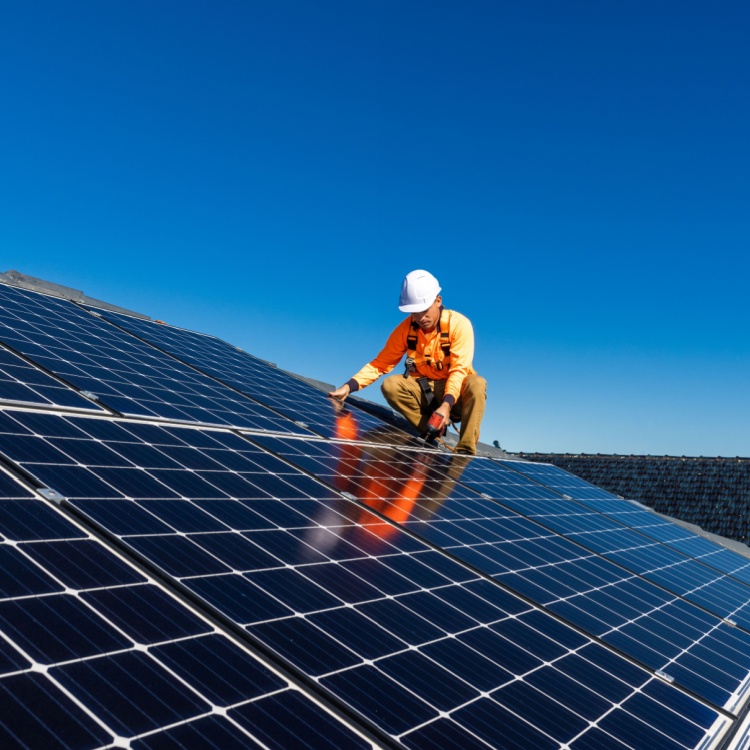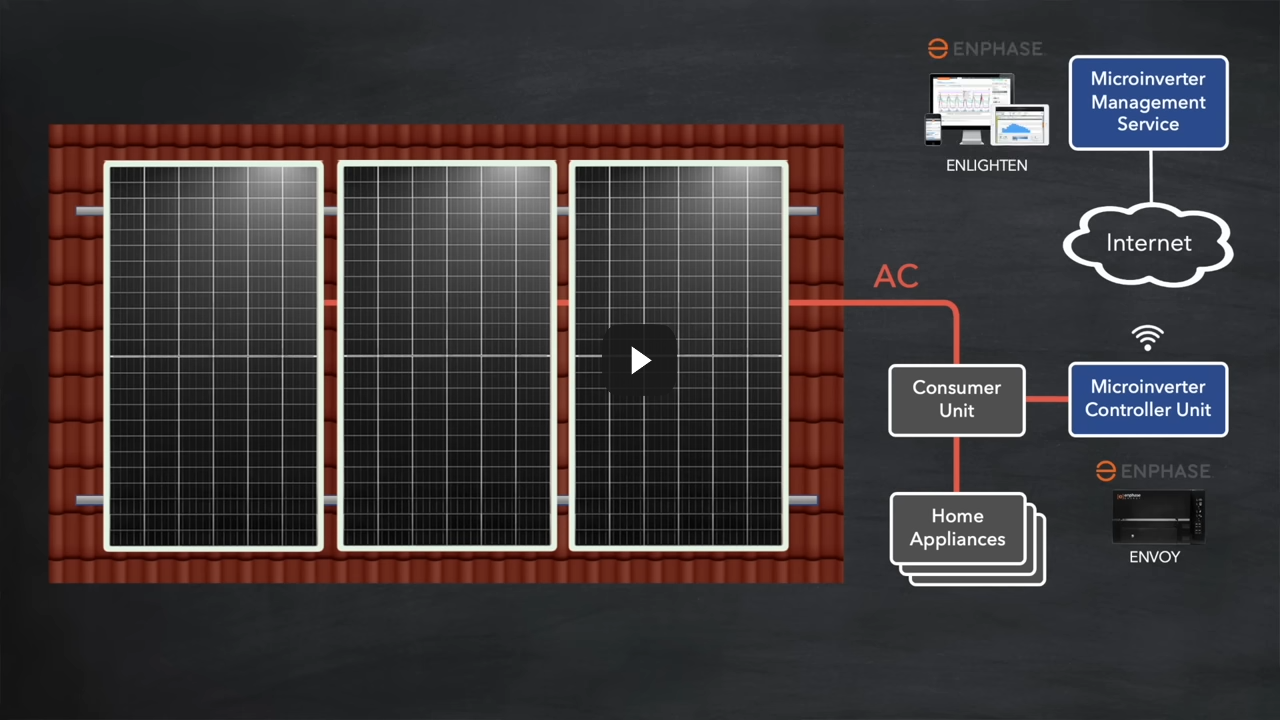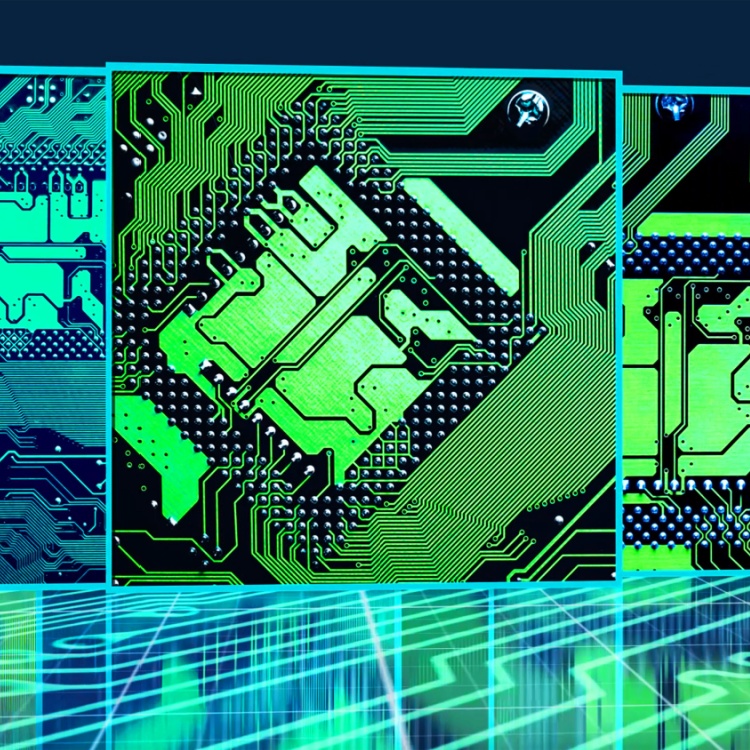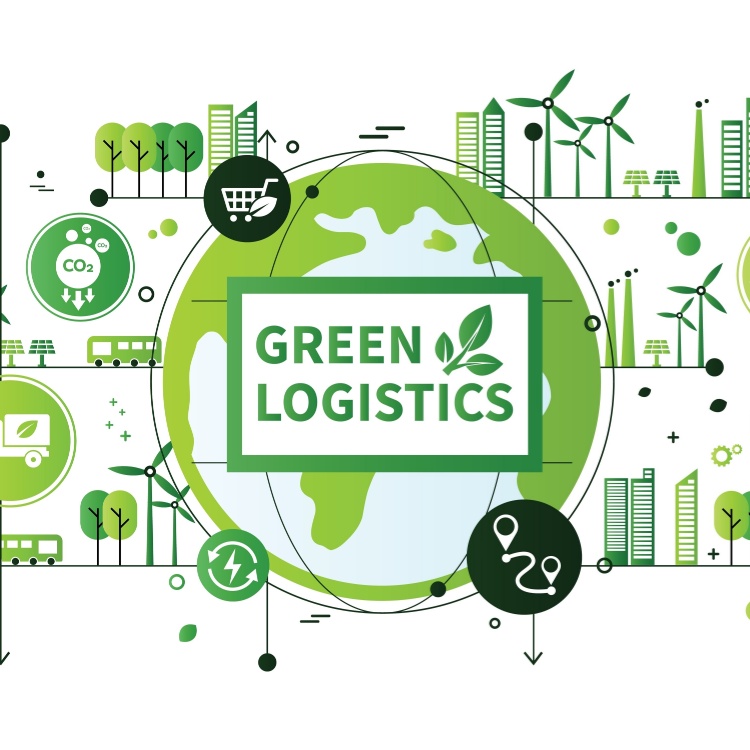Are Microinverters Best for Your Solar Panels?

Solar energy is the third largest renewable energy source globally, behind wind and hydropower. It accounts for almost 5.5% of the world's electricity generation. In the fast-evolving field of solar energy technology, microinverters have become crucial components, enhancing solar power systems' efficiency, dependability, and adaptability.
As the solar energy market expands, so does the use of microinverters. It's projected to grow by over 19% at US$7.74 billion by 2029. The residential sector will likely fuel the market's expansion due to desired savings in electricity expenses, increasing demand for alternative electricity sources, and climate change risk mitigation. Meanwhile, Asia-Pacific is set to experience the highest market growth, with Australia and Japan leading the adoption of microinverter technology.
What is a microinverter?
Solar cells absorb and convert solar energy to DC (direct current) electricity. Since homes use AC (alternating current), a microinverter is needed to transform solar power into usable power.
Unlike the commonly used string converters, which are mounted on the wall away from the array, microinverters can be directly attached to each solar panel. Because they operate independently from other solar panels, microinverters generate increased power. As a result, there is better overall system efficiency and energy capture, especially in situations where panels experience fluctuating conditions during the daytime.
Microinverters are most beneficial for homeowners experiencing shading issues. They are also well-suited for challenging roof orientations, starter systems, and small-scale applications.
Pros of using microinverters
In recent years, microinverters have been hailed as the future of solar PV inverter technology. Their rapid adoption has confirmed their enduring presence in the industry. Here are some of its benefits:
-
Boosted efficiency
Microinverters offer superior efficiency by optimizing energy production at the individual panel level, minimizing losses. Unlike traditional string inverters, they prevent system-wide shutdowns caused by a single point of failure, ensuring continuous operation even if a microinverter or panel malfunctions. This resilience reduces downtime and potential revenue loss, as microinverters can be quickly replaced without affecting the entire system's functionality. This robust design makes them ideal for maintaining uninterrupted power generation in solar installations.
-
Longer lifespan
Microinverters boast a more extended warranty of 20 to 25 years, significantly longer than the typical 5-year warranties of string inverters. Compared to central inverters, they endure longer due to lower power and heat exposure, which reduces wear and tear over time. This durability aligns with the lifespan of modern solar panels, offering long-term value by avoiding the costly replacement of central inverters. As mentioned, microinverters function independently, so the failure of one unit doesn't affect the whole system. This also reduces overall maintenance needs, which extends their lifespan.
-
Greater flexibility
Microinverters provide flexibility in system design, allowing for easy expansion of solar panels without concerns about inverter compatibility. String inverters have specific input and output limitations and require careful planning to avoid inefficiencies. Meanwhile, microinverters operate at the panel level, accommodating various configurations seamlessly. This modular approach simplifies installation and avoids the need for oversized inverters, reducing unnecessary costs when expanding solar installations.
-
More cost-effective
Microinverters offer advanced panel-level monitoring, allowing precise identification and troubleshooting of underperforming panels. In contrast, string inverters typically provide only array-level monitoring, which cannot pinpoint individual panel issues remotely. While DC optimizers can add panel-level monitoring to string inverter systems, the added cost often makes microinverters a more cost-effective choice for ensuring each panel operates optimally. This monitoring capability ensures continuous peak performance and facilitates timely maintenance interventions, maximizing overall solar system efficiency.
-
Enhanced safety
Microinverters enhance safety by eliminating the risk of system-wide shutdowns caused by a single panel issue. This minimizes safety concerns and improves system reliability. Additionally, microinverters convert DC power to AC at the panel level, eliminating the need for high-voltage DC wiring. This design significantly enhances safety for installers and system owners compared to traditional string inverters, which operate at higher DC voltages.
Cons of using microinverters
However, microinverters may also present these drawbacks:
-
Higher upfront costs
Microinverter systems generally cost more upfront compared to traditional inverters due to their individual panel management. This initial investment may discourage budget-conscious consumers or larger installations seeking lower initial costs. In contrast, string inverters are typically more cost-effective initially and simpler to install, but they can suffer from performance issues due to shading or panel mismatch. Their centralized setup may also lead to power losses and reduced overall system efficiency over time.
-
Potentially complicated maintenance
Microinverters provide advanced monitoring capabilities, allowing for precise detection of individual panel-level issues. However, their decentralized setup can complicate maintenance and troubleshooting processes. Addressing specific panel-level issues may necessitate specialized expertise and tools, making maintenance tasks more complicated. This complexity underscores the importance of qualified professionals handling microinverter installations and maintenance to ensure consistent and optimal system performance.
How evolving technologies improve microinverters
Continuous product research and development endeavors will enhance these tools' capabilities and affordability. Here are some future possibilities that will make their adoption even more widespread:
-
Merging with energy storage systems
As energy storage systems like batteries become more common in solar setups, future microinverters might seamlessly incorporate these solutions. This could allow homeowners to store surplus daytime energy during peak demand or when sunlight is limited. Such installations enable homeowners to rely more on renewable energy, contributing to lower carbon emissions and supporting sustainability measures.
-
Integration with smart grids
Microinverters may come equipped with sophisticated communication features that revolutionize smart grid systems. These can facilitate real-time communication with utility providers to balance energy supply and demand, improve energy distribution efficiency, and contribute to the electrical infrastructure's reliability.
-
The use of AI
Artificial Intelligence (AI) algorithms could transform microinverter monitoring and upkeep. Predictive maintenance algorithms might foresee and prevent issues, reducing downtime and boosting system reliability. Moreover, AI can continuously analyze data from microinverters to optimize their performance under varying conditions, maximizing energy production efficiency. To improve overall system responsiveness and stability, AI algorithms can adjust microinverter settings in real-time to adapt to changing environmental and grid conditions.
-
Affordability
Advancements in manufacturing processes and materials for microinverters have the potential to reduce production costs significantly. This could make microinverters more affordable for a broader range of consumers, accelerating the use of solar energy systems. This trend would contribute to the expansion of renewable energy usage and the overall transition towards more sustainable energy solutions on a global scale.

As one of the Top 20 EMS companies in the world, IMI has over 40 years of experience in providing electronics manufacturing and technology solutions.
We are ready to support your business on a global scale.
Our proven technical expertise, worldwide reach, and vast experience in high-growth and emerging markets make us the ideal global manufacturing solutions partner.
Let's work together to build our future today.
Other Blog




